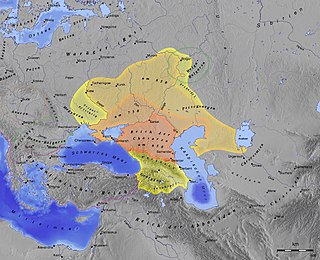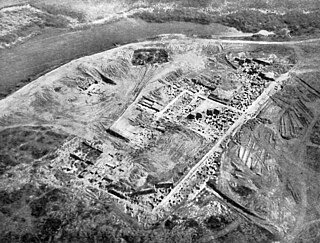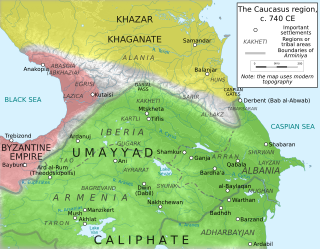This article includes a list of references, related reading, or external links, but its sources remain unclear because it lacks inline citations .(June 2013) |
The following is a list of Khazar rulers.
This article includes a list of references, related reading, or external links, but its sources remain unclear because it lacks inline citations .(June 2013) |
The following is a list of Khazar rulers.
| Name | Reign | Comments |
|---|---|---|
| Kozar | Eponymous folk-ancestor of the Khazars | |
| Karadach | 450 AD | Karadach was the king of the Akatziroi, a steppe nation allied to the Huns. He is described in the accounts of Priscus. |
The Khagans were supreme chiefs of the people, holding positions of much influence and spiritual authority, but with little day-to-day command.
| Name | Reign | Comments |
|---|---|---|
| Ziebel | 618–630 | Tong Yabghu Qaghan of the West Göktürks ? |
| Böri Shad? | 630–650 | |
| Irbis? | 650 | |
| Khalga? | mid 660s? | During the period between 650 and 680, one will sometimes see references to a Khalga, mid 660s, and Kaban, late 660s. Researchers should be aware that these names are derived from a single document, the Cäğfär Taríxı , and that a great many scholars have severely attacked this document as a mixture of factual data and outright fabrication. The Cäğfär Taríxı purports to be a compilation of early Bulgar historical material, assembled (or at least written in its present form) in the late 17th century. It has been used by Volga Tatars to document that their antecedents in their region extend back in time by many centuries. Critics claim the Cäğfär Taríxı to be a forgery, created by or at the behest of the Soviet Secret Police (then the NKVD) in the 1930s for the purpose of creating divisiveness and factionalism within the ethnic Tatars of that era. The Soviet government did create spurious historical documents on several occasions. The historicity of the people that it refers to is therefore questionable, so until additional documentation comes to light, Khalga and Kaban should be regarded warily at best. |
| Kaban? | late 660s? | |
| Busir (Ibuzir Glavan) | c. 690–715 | Busir Glavan took in the exiled Byzantine Emperor, Justinian II, and gave him his own sister (baptismal name Theodora). He later tried to kill Justinian to placate Tiberius III, causing Justinian's flight to Bulgaria and his ultimate restoration to the throne. |
| Barjik | late 720s–731 | |
| Bihar | c. 732 | Bihar is the name given in some sources to the Khazar Khagan whose daughter Tzitzak married the future Byzantine Emperor Constantine V. The son of Constantine and Tzitzak was Leo IV the Khazar. |
| Prisbit | late 730s | Female. Regent? |
| Under the Umayyad Caliphate | 737–c. 740 | |
| Baghatur | c. 760 | Ras Tarkhan is also mentioned in this period. |
| Khan-Tuvan (a.k.a. Dyggvi) | c. 825– 830 (died?) | |
| Tarkhan | 840s | Arab sources speak of "Tarkhan, King of the Khazars" during this period. "Tarkhan" can be both a proper name and a military rank. It is unclear whether the sources refer to a Khagan named Tarkhan or make a confusing reference to a general. |
| Zachariah | c. 861 |
The Khagan Beks were war chiefs, military commanders who exercised considerable day-to-day authority, and were sometimes regarded by outsiders as the supreme lords of the Khazar nation.
| Name | Reign | Comments |
|---|---|---|
| Yazir Bulash | It is not entirely clear that these individuals were or were not Bulanids. They may have been simply warlords. Nevertheless, their activity parallels that of the later Beks, and so are included. | |
| Chorpan Tarkhan | c. 630 | |
| Alp Tarkhan | early 8th century | |
| Tar'mach | c. 730 | |
| Hazer Tarkhan | ?–737 | |
| Under the Caliphate | 737–c. 740 |
Hazer Tarkhan's army was annihilated at Itil in 737 AD, and the Umayyad Caliphate imposed Islam upon the Khazars. Nevertheless, the Caliphs could not adequately garrison Khazaria, and within a few years the Khazars were once again independent. The famous conversion to Judaism seems to have occurred about this time. The date of the actual conversion to Judaism is a matter of some controversy. According to Yehuda Halevi in Kuzari, it occurred around 740 AD, though some Arab sources point to a date closer to the end of the 8th century or early 9th century, and more recent scholars have postulated that 861 AD, the date of St. Cyril's visit to Khazaria, was the year of the conversion to Judaism.
The 2002 discovery of a coin hoard in Sweden further complicates the issue, as some of the coins bear dates from the early 9th century and the legends "Ard al-Khazar" (Land of the Khazars) and "Moses is the Prophet of God". Since the coins date from 837 AD or 838 AD, some scholars think the conversion occurred in 838 AD. Bulan Sabriel was the Khazar ruler at the time of the conversion, but in the list below all the dates up to Aaron I are based on a presumed 740 AD conversion date.
| Name | Reign | Comments |
|---|---|---|
| Bulan Sabriel | c. 740 | Joseph corresponded with Hasdai ibn Shaprut, a Jewish vizier to Abd al-Rahman III, Caliph of Córdoba. It is from that correspondence that this list is taken. It is not entirely ruled out that the Bulanids were in fact Khagans rather than Beks, though their power certainly appears to be that of the Beks. Moreover, it is possible that the positions merged in the 10th century, as Joseph makes no reference to a colleague, instead referring to himself as "king of the Khazars." |
| Obadiah | c. 786–809 | |
| Hezekiah | ||
| Manasseh I | ||
| Chanukkah | ||
| Isaac | ||
| Zebulun | ||
| Manasseh II | ||
| Nisi ben Menasseh | ||
| Aaron I | c. 900 | |
| Menahem | ||
| Benjamin | c. 920 | |
| Aaron II | c. late 920s –940 | |
| Joseph | 940–965 |
In 969 AD, Sviatoslav I of Kiev sacked Itil, the capital of the Khazar Khaganate. Khazar successor states appear to have survived in the Caucasus and around the Black Sea. We know of two later Khazar rulers:
| Name | Reign | Comments |
|---|---|---|
| David | c. 986–988 | |
| Georgius Tzul (of Kerch) | ?–1016 |
Georgius Tzul was captured by a joint Rus'-Byzantine expedition and his state was destroyed. Shortly thereafter, the Kipchaks became masters of the Pontic steppe (see Cumans). However, there continue to be tantalizing references, in Muslim sources, of battles against "Khazars" in the Caucasus well into the late 11th century. Whether Khazar states continued to survive or their name was used generically to describe Caucasian highlanders is unclear.
The fate of the Jewish Khazars is unclear. Jewish travelers of the 12th century continue to refer to them in passing. Khazar Jews are known to have lived in Kiev and even to have emigrated to Spain, the Byzantine Empire and Iraq. According to some sources the majority may have gone to Hungary, Poland and the Crimea, mingling with Jews in those areas and with later waves of Jewish immigrants from the west.

The Khazars were a nomadic Turkic people that, in the late 6th-century CE, established a major commercial empire covering the southeastern section of modern European Russia, southern Ukraine, Crimea, and Kazakhstan. They created what for its duration was the most powerful polity to emerge from the break-up of the Western Turkic Khaganate. Astride a major artery of commerce between Eastern Europe and Southwestern Asia, Khazaria became one of the foremost trading empires of the early medieval world, commanding the western marches of the Silk Road and playing a key commercial role as a crossroad between China, the Middle East and Kievan Rus'. For some three centuries the Khazars dominated the vast area extending from the Volga-Don steppes to the eastern Crimea and the northern Caucasus.

Sarkel was a large limestone-and-brick fortress in what is now Rostov Oblast of Russia, on the left bank of the lower Don River.
Atil, also Itil, was the capital of the Khazar Khaganate from the mid-8th century to the late 10th century. Known to have been situated on the Silk Road, in the vicinity of the Caspian Sea, its precise location has long been unknown.
The Grand Prince of Kiev was the title of the monarch of Kievan Rus', residing in Kiev from the 10th to 13th centuries. In the 13th century, Kiev became an appanage principality first of the grand prince of Vladimir and the Mongol Golden Horde governors, and later was taken over by the Grand Duchy of Lithuania.
The Kabars, also known as Qavars (Qabars) or Khavars were Khazar rebels who joined the Magyar confederation possibly in the 9th century as well as the Rus' Khaganate.
The Khazar Correspondence is a set of documents, which are alleged to date from the 950s or 960s, and to be letters between Hasdai ibn Shaprut, foreign secretary to the Caliph of Cordoba, and Joseph Khagan of the Khazars. The Correspondence is one of only a few documents attributed to a Khazar author, and potentially one of only a small number of primary sources on Khazar history.
Bulan was a Khazar king who led the conversion of the Khazars to Judaism. His name means "elk" or "hart" in Old Turkic. The date of his reign is unknown, as the date of the conversion is hotly disputed, though it is certain that Bulan reigned some time between the mid-8th and the mid-9th centuries. Nor is it settled whether Bulan was the Bek or the Khagan of the Khazars.
The Schechter Letter, also called the Genizah Letter or Cambridge Document, was discovered in the Cairo Geniza by Solomon Schechter in 1912. It is an anonymous Khazar letter discussing several matters including the wars of the early 940s, involving the Byzantine Empire, the Khazar Khaganate, and Kievan Rus'. Scholars have debated its authenticity.
Joseph ben Aaron was king of the Khazars during the 950s and 960s. Joseph was the son of Aaron II, a Khazar ruler who defeated a Byzantine-inspired war against Khazaria on numerous fronts. Joseph's wife was the daughter of the king of the Alans.
The Bulanids were the ruling dynasty of the Khazar Khaganate during the 9th century and 10th century CE.
Khan-Tuvan Dyggvi, according to Omeljan Pritsak, was the name of a Khazar khagan of the mid 830s. He led a rebellion of the Kabars against the Khagan Bek. As this rebellion took place roughly contemporaneously with the conversion of the Khazars to Judaism, Pritsak and others have speculated that the rebellion had a religious aspect. Omeljan Pritsak speculated that a Khazar khagan named Khan-Tuvan Dyggvi, exiled after losing a civil war, settled with his followers in the Norse-Slavic settlement of Rostov, married into the local Scandinavian nobility, and fathered the dynasty of the Rus' khagans. Constantine Zuckerman dismisses Pritsak's theory as untenable speculation, and no record of any Khazar khagan fleeing to find refuge among the Rus' exists in contemporaneous sources.
In the Schechter Letter, Serach is the wife of the Khazar ruler Sabriel. A Jew, she encourages her husband and other Khazars to convert to Judaism and establish it as the official religion of Khazaria. Serach is not mentioned in the Khazar Correspondence or the Kuzari.
Hezekiah ben Obadiah was a hypothetical ruler of the Khazars, probably in the mid ninth century CE. He was the son of Obadiah, the descendant of Bulan who brought rabbinical scholars to and built yeshivot in Khazaria. Nothing is known about Hezekiah's reign and the historical authenticity and accuracy of the only document mentioning his name has been questioned. As with other Bulanid rulers, it is unclear whether Hezekiah was Khagan or Khagan Bek of the Khazars, although the latter is more likely.
Menasseh ben Zebulun was a hypothetical Jewish ruler of the Khazars mentioned in some extant editions of the Khazar Correspondence. In some versions he is called Moshe or Moses, but this may be a result of the degradation of the text. He probably reigned in the late ninth century CE. Little is known about his reign. As with other Bulanid rulers, it is unclear whether Menasseh was Khagan or Khagan Bek of the Khazars, although the latter is more likely. Historical authenticity and accuracy of the only document mentioning his name has been questioned.
Nisi ben Menasseh or Nisi ben Moses was a Jewish Turkic ruler of the Khazars mentioned in the Khazar Correspondence. He probably reigned in the mid to late 9th century CE. Little is known about his reign. As with other Bulanid rulers, it is unclear whether he was Khagan or Khagan Bek of the Khazars, although the latter is more likely. His son, Aaron ben Nisi, is also mentioned as a Khazar ruler by the same source.
Aaron ben Nisi was a Jewish ruler of the Khazars mentioned in the Khazar Correspondence. He reigned around the year 900 AD. He was the son of Nisi ben Menasseh. Little is known about his life or reign. As with other Bulanid rulers, it is unclear whether Aaron was Khagan or Khagan Bek of the Khazars, although the latter is more likely.

The Arab–Khazar wars were a series of conflicts fought between the Khazar Khaganate and successive Arab caliphates in the Caucasus region from c. 642 to 799 CE. Smaller native principalities were also involved in the conflict as vassals of the two empires. Historians usually distinguish two major periods of conflict, the First Arab–Khazar War and Second Arab–Khazar War ; the wars also involved sporadic raids and isolated clashes from the mid-seventh century to the end of the eighth century.

The Caspian expeditions of the Rus' were military raids undertaken by the Rus' between the late 9th century and c. 1041 on the Caspian Sea shores, of what are nowadays Iran, Dagestan, and Azerbaijan. Initially, the Rus' appeared in Serkland in the 9th century traveling as merchants along the Volga trade route, selling furs, honey, and slaves. The first small-scale Viking raids took place in the late 9th and early 10th century. The Rus' undertook the first large-scale expedition in 913; having arrived on 500 ships, they pillaged in the Gorgan region, in the territory of present-day Iran, and more to the west, in Gilan and Mazandaran, taking slaves and goods. On their return, the northern raiders were attacked and defeated by the Khazars in the Volga Delta, and those who escaped were killed by the local tribes on the middle Volga.
Pax Khazarica is a historiographical term, modeled after the original phrase Pax Romana, applied to the period during which the Khazar Khaganate dominated the Pontic steppe and the Caucasus Mountains. During this period, Khazar dominion over vital trans-Eurasian trade routes facilitated travel and trade between Europe and Asia by such groups as the Radhanites and the early Rus. The originator of the term is unknown but it was in use by scholars as early as the nineteenth century.
Rusʹ Khaganate, or kaganate of Rus is a name applied by some modern historians to a hypothetical polity suggested to have existed during a poorly documented period in the history of Eastern Europe between c. 830 and the 890s.